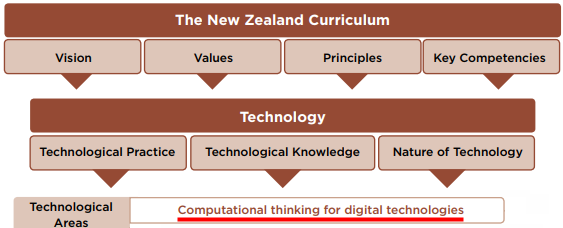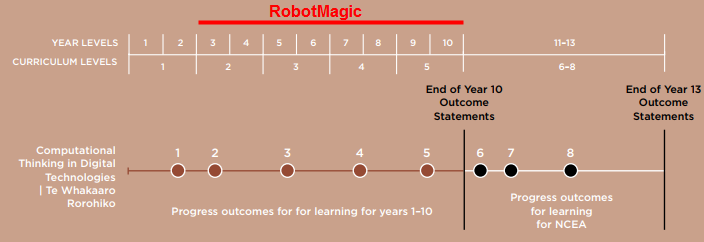How to teach Computational Thinking for Digital Technologies
The "New Zealand Curriculum" is well known around the world for its guidance on how to best prepare students for tomorrow. The latest update includes a requirement to teach "Computational Thinking for Digital Technologies" as part of the Technology Learning Area. By 2020, all schools must satisfy this requirement.

The curriculum specifies "Progress Outcomes" to clearly describe the steps students take to digital literacy. Of these 8 progress outcomes, the first is typically satisfied with non-computer-based activities like playing cards and games while outcomes 6,7, and 8 require advanced tools and professional development to prepare students for specialized careers.
Progress outcomes 2,3,4 and 5, typically taught at year levels 3-10 to kids aged 8-15 are ideally satisfied by a single teaching tool, RobotMagic.

Currently RobotMagic is used both by highly experienced technology teachers as well as schools just getting started with technology. Experienced teachers use RobotMagic to teach concepts and provide students with a rich sandbox to strengthen their computational thinking skills (see success story with Dr. Erickson here). Schools with less digital technology experience take advantage of our online courses. We offer a series of courses that directly address progress outcomes 2,3,4 and 5. Each course is self-guided and ensures that the student will achieve the progress outcome. Teachers can customize courses to suit their style and needs.
